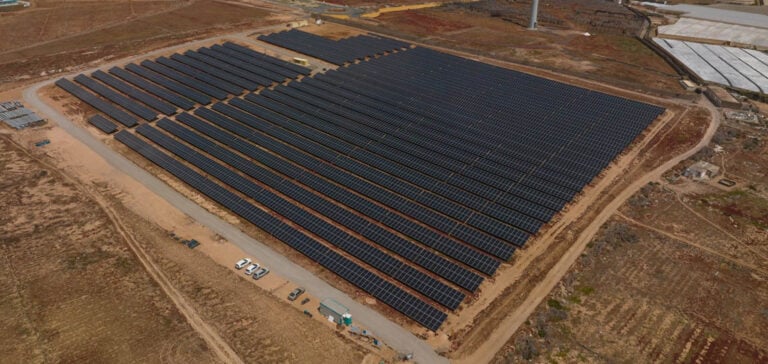Naturgy inaugurates Salinetas, a recently commissioned photovoltaic power plant. Located in the town of Telde, Gran Canaria, the plant required an investment of 5.2 million euros. It marks a significant step towards a greener energy future for the archipelago.
A significant contribution to renewable energy
The Salinetas plant has an installed capacity of 4.2 MW. It generates an annual output of 7.2 GWh, equivalent to the annual energy consumption of more than 2,000 households. As well as providing a clean source of energy, it will also help reduce CO2 emissions by more than 4,800 tonnes a year. This milestone marks an important step towards reducing the Canaries’ carbon footprint.
Job creation and expansion
The Salinetas plant not only provides an environmental solution, but also an economic opportunity. It has created around 20 direct and indirect jobs throughout the construction, operation and maintenance phases. In addition, Naturgy plans to build a further 10 photovoltaic projects over the coming months, adding a further 45 MW to the archipelago’s energy capacity.
A commitment to the energy transition
Naturgy plays a central role in the energy transition and decarbonization. The company currently has nearly 5.7 GW of renewable capacity worldwide. In Spain, it is currently building around 30 wind farms and photovoltaic power plants. They aim to reach nearly 1 GW of installed capacity by the end of 2024. These investments demonstrate Naturgy’s commitment to a cleaner energy future.
A positive environmental impact
Before the plant was built, a comprehensive clean-up effort was undertaken to restore the area. This operation removed the waste and restored the land, which was once abandoned agricultural land. Measures have also been taken to encourage the regeneration of natural vegetation. In addition, the plant’s fence has been designed to preserve connectivity for local wildlife. These initiatives demonstrate the company’s commitment to the environment and biodiversity.
The Salinetas photovoltaic power plant represents a milestone in the Canary Islands’ energy transition. It provides a renewable energy source, reduces CO2 emissions and creates local jobs. Naturgy is asserting itself as a key player in building a more sustainable energy future, while contributing to the achievement of ESG objectives. This demonstrates that, through strategic investment and innovation, it is possible to combine economic prosperity with environmental responsibility.
Final Analysis
The commissioning of the Salinetas photovoltaic power plant in the Canary Islands is of crucial importance from both a financial and energy point of view. This breakthrough represents a significant investment of 5.2 million euros by Naturgy. This demonstrates its commitment to the region’s energy transition. The additional capacity of 4.2 MW and production of 7.2 GWh per year will help to meet the Canaries’ growing energy demand, while significantly reducing CO2 emissions. In addition, the creation of local jobs is a further positive impact, supporting the region’s economy. The construction of a further 10 photovoltaic projects in the pipeline demonstrates Naturgy’s determination to continue along the path of clean energy. This initiative is an important step towards a more sustainable energy future for the Canaries, while respecting environmental, social and governance objectives.






















